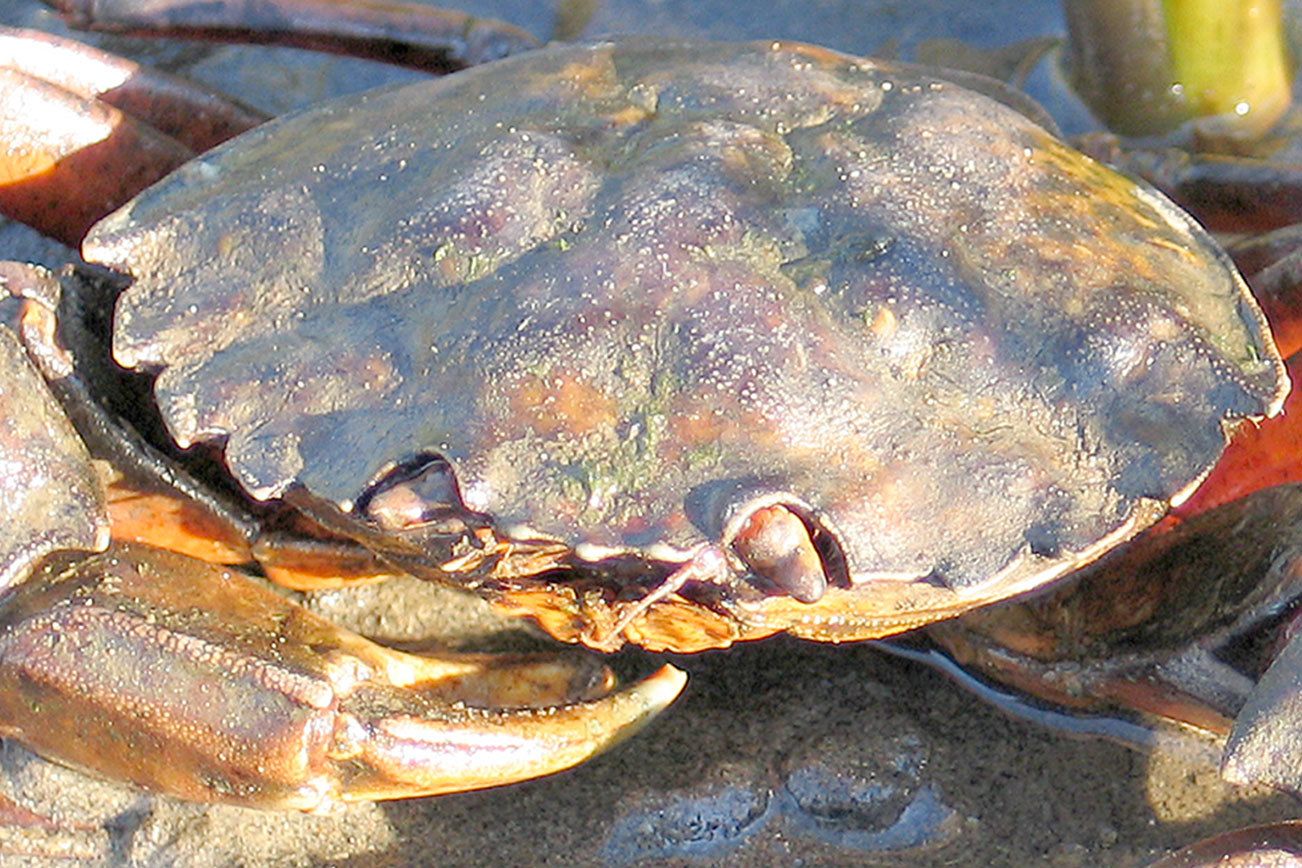PORT TOWNSEND — Scientists have called on the public to help monitor shorelines for an invasive species of crab over the summer.
Teams of citizen scientists have searched the Puget Sound and Strait of Juan de Fuca for European green crabs and so far the results are good.
“So far no green crabs have been found,” said MaryAnn Wagner, spokesperson for Washington Sea Grant, the organization leading the effort.
There are several sites being monitored in Jefferson and Clallam Counties and to date, not one of the crabs has been found in Washington’s waters.
“We want to watch for this invasive species and be ready to address the problem as soon as we find one,” Wagner said. “And hopefully we never will.”
This is the second year of the project, which is monitoring for the small but highly efficient and adaptable predator.
The European green crab has been blamed for the collapse of the soft-shell clam industry in parts of Maine; some are concerned it might likewise affect native and commercial species in Puget Sound, Wagner said.
That’s why scientists were alarmed when the first known green crab colony in the Salish Sea was discovered near Victoria, across the Strait on Vancouver Island.
“That’s very close,” Wagner said.
There are an estimated 400 or more potentially suitable habitat sites in the Puget Sound and around the Strait of Juan de Fuca, though some are more suitable than others, said Jeff Adams, the marine ecologist with Washington Sea Grant who is leading the program.
They have prioritized 25 sites that should be monitored, but are asking beach goers to be on the lookout for the crab.
Those locations include lagoons and pocket estuaries.
A map showing identified sites is here
“They might show up anywhere,” he said. “It’s important to have people who frequent beaches to be aware should they actually see something.”
What people should look for are fist-sized crabs, typically about three inches across at the largest part of their shell. The European green crab is the only crab likely to be found with five spines on the back shell from each eye to the widest points.
If beach goers find a green crab, Adams said to take pictures and email the crab team.
The program is relying heavily on volunteers.
Adams estimated about 80 volunteers are monitoring throughout the Puget Sound, up to four at each of the 25 sites.
Among the volunteers is a crew of about four people from the Port Townsend Marine Science Center, said Betsy Carlson, citizen science coordinator.
“It’s one of those projects where you’re trying not to find what you’re looking for,” she said.
One of the problems with the crabs is that once a population is established, they can reproduce quickly, Carlson said.
If the crabs are found, the goal would be to control the population and prevent it from spreading, Adams said.
The state Department of Fish and Wildlife would likely take the lead, but the crab team would be involved in the primary effort, helping with trapping in the area.
Even if the crabs aren’t found, Adams said the work volunteers are doing is beneficial.
While none of the crabs have been found, volunteers have been collecting size and sex data on other species of crabs and collecting shoreline habitat data.
For those that would like to help with the program, there will likely be a training in March 2017.
To report a green crab sighting or for information on how to help with the program, email crabteam@uw.edu.
________
Reporter Jesse Major can be reached at 360-385-2335, ext. 5550, or at jmajor@peninsuladailynews.com.

